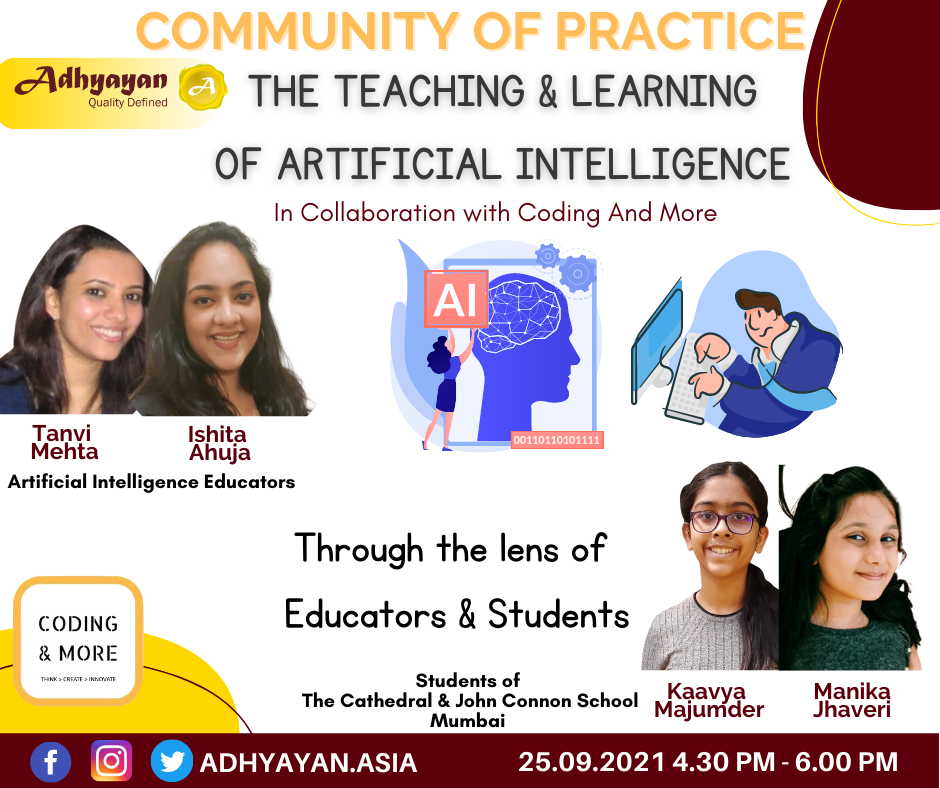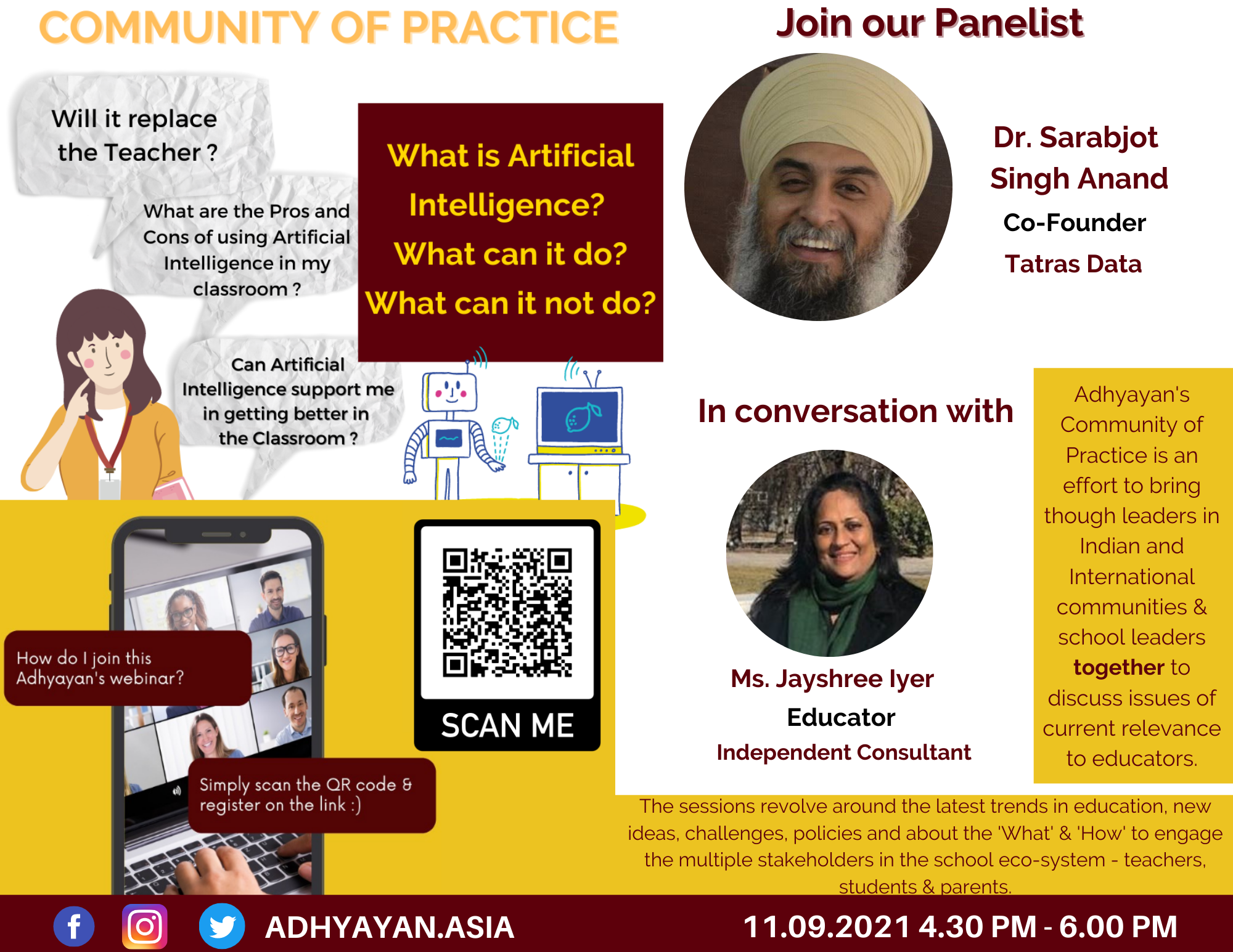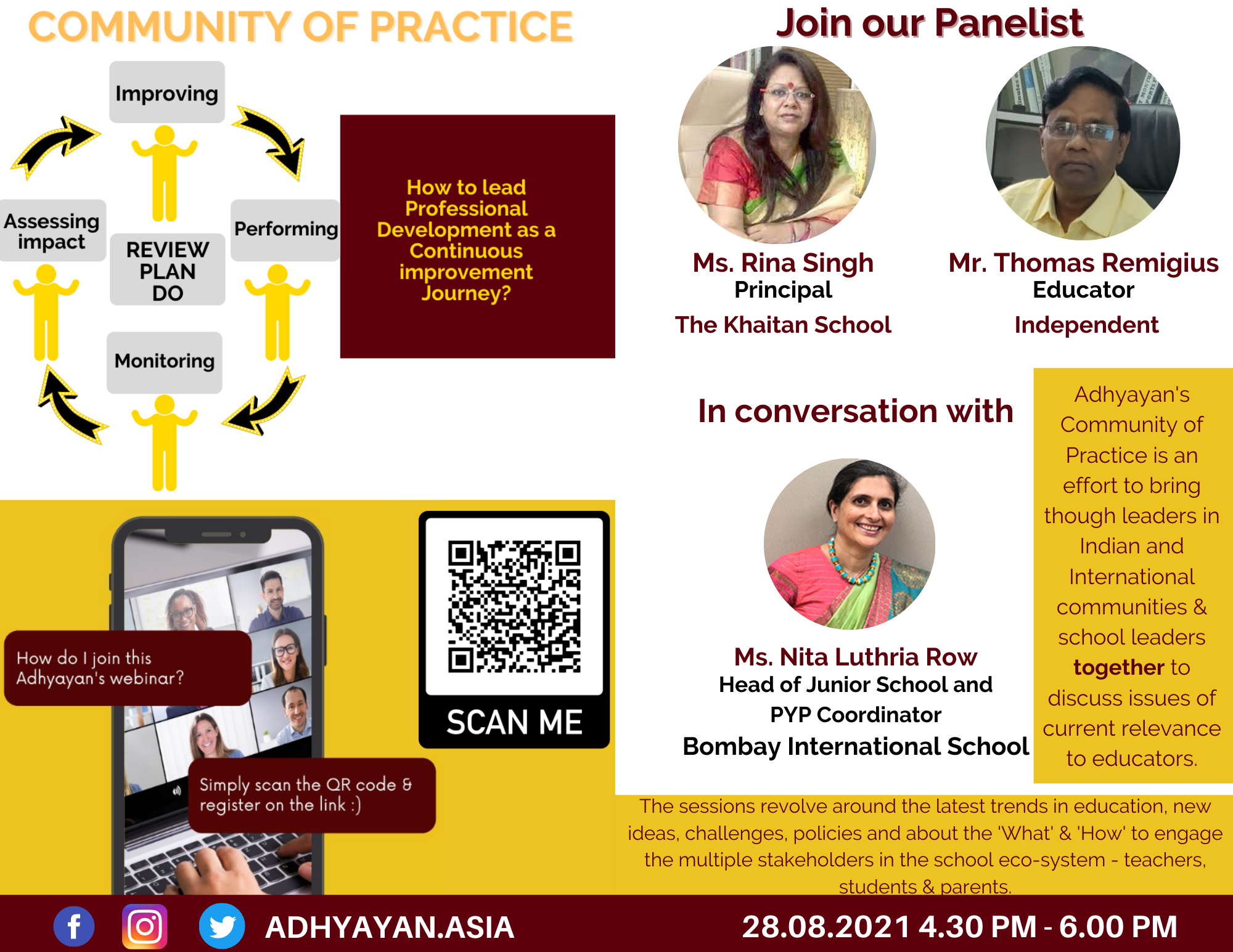Date: 09.10.2021 at 4.30 PM – 6.00 PM
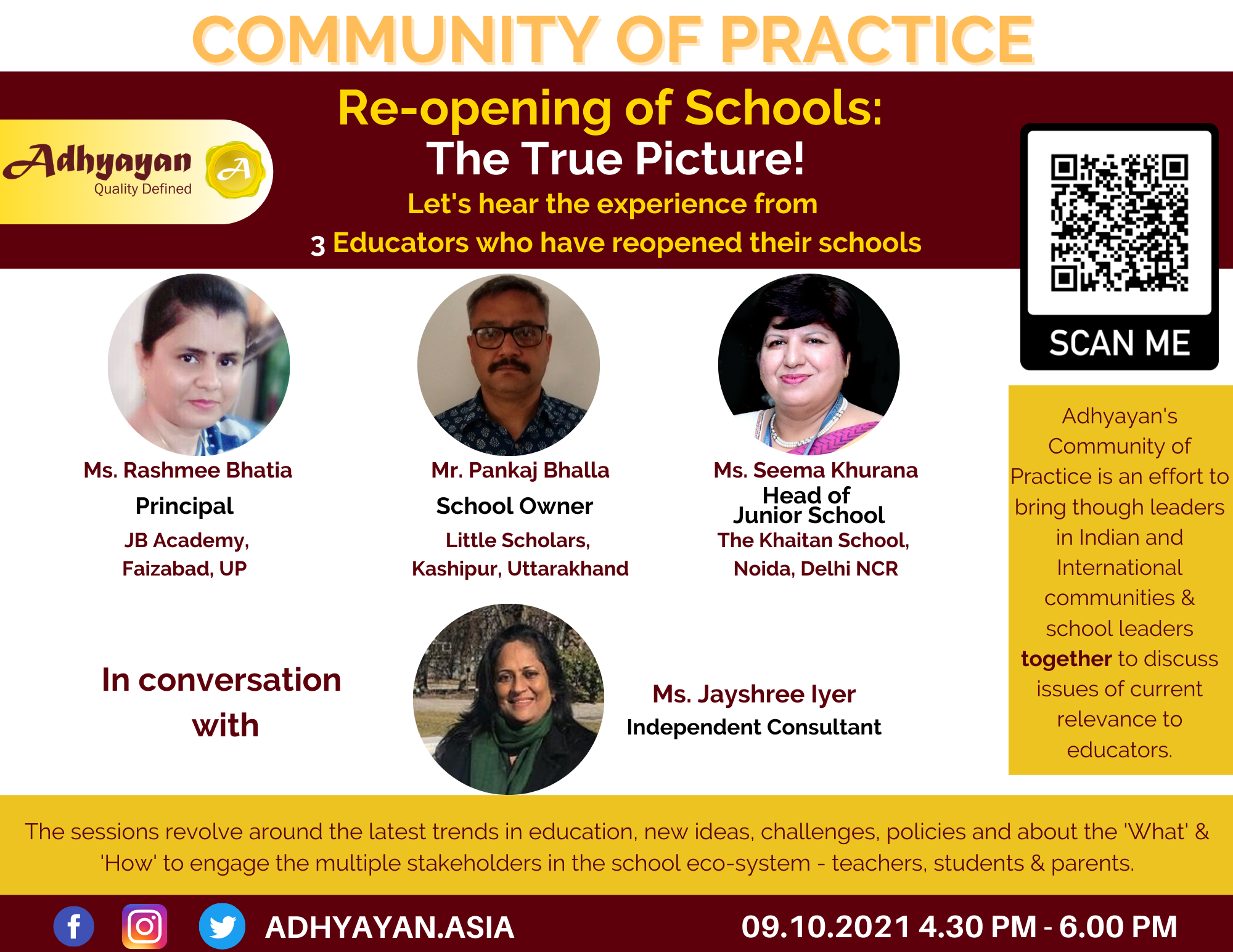
Panelists
Guest 1: Rashmee Bhatia Principal J B Academy Ayodhya, former principal Blue Bells International School. subject matter expert in History with Manipal Global education in India.
Guest 2: Ms Seema Khurana Heading junior wing Khaitan Public School, former Principal Ryan International School Delhi
Guest 3: Mr Pankaj Bhalla Practicing architect, School Owner of Little Scholar school in Kashipur in Uttarakhand. Actively gives opportunities to students to work on the United Nations sustainable development goals by developing partnerships with Govt. institutions and NGOs and with many local social bodies in Kashipur Uttarakhand
Host Ms Jayshree Iyer
As the Government announced reopening of schools for students from class 9-12 recently, schools started preparing for the same. At such a time Adhyayan’s initiative to address concerns of parents was apt. Jayshree shared these concerns from the anxious parents regarding sending their children back to school after a long spell of staying in the protection of home especially when they are still without vaccination. These were going to be reference points for the educators and school leaders for further discussion in rest of the session.
Seema responded to many of them informing all about the kind of preparations that her school made like constituting a 16 -member committee coming from different levels for administration, taking care of the logistics for transport, teacher work station, toilets, sanitisation, thermal checks, medical aid, seating, time table and so on. Teachers, students and parents- all three stakeholders- were sensitized and informed about the standard operating procedure before actual re-opening of the schools. Consent was sought from parents; just 23% of them showed their willingness initially. As some changed their mind gradually, this data was tracked daily through digital intervention.
Individual care was given to each child. All DOs and DON’Ts were explained to students, parents as well as teachers. Constant monitoring of activities was done to ensure safety for all. Vaccination records and travel records were checked and ensured all contact persons were fully vaccinated or no possible-carriers of the virus were allowed to come in contact with them.
Rashmee resonated with Seema where SOP and other safety preparation were concerned. To reduce the number, students were called at different times. Along with academics, co-curricular activities were also carried out. Management took care of medical claims and COVID leaves for teachers. Even families affected by COVID were shown consideration with respect to their financial and emotional issues.
Mapping was done and displayed to clarify the location of all levels of helping hands in the school premises. Students were made to feel welcome as well as safe with decorations and safety-procedure posters all over. The staff members acted as role models by following COVID protocols. Sanitisers and extra masks were also made available.
Pankaj shared his concerns regarding student transportation and parents not paying fees. Apart from it, the misunderstanding was caused by rumours spread by media. The attendance was erratic due to the small coaching centres mushrooming in the locality. The timing was kept staggered for junior and senior students. The COVID protocol and other safety measures were followed as discussed by Rashmee and Seema.
Pankaj talked about the inertia that students and teachers faced about their unwillingness to work longer hours. The parents resisted extracurricular activities organised by the school for the younger lot. A similar situation was faced by Rashmee who organised de stressing activities like Jumba for senior students but same was not favored for junior students by their parents.
Talking about the workload distribution of teachers, classes had to be held online on alternate days. The focus was kept on concept delivery giving the mental-emotional health of students equal priority. Training was given to teachers and students on new ways of evaluation. Working on time table was a challenge as it had to be constantly modified. There was no tried and tested formula as everything remained in a flux.
Seema mentioned about travel fatigue as no one was used to commuting and staying in school anymore. Wearing masks for children was another problem especially when on the playground. Readjustment from online to offline mode met with inertia as Pankaj talked about.Connectivity issue and hardware compliance, managing their own transport and responsibility of the safety of children under their custody has already started stressing out teachers.
At the end, if schools have to work, these problems must be faced, in the opinion of all. Finally then what is the way forward?
As per common agreement- Student engagement in the hybrid classroom while following a strict protocol; The motivation of teachers has to be kept up; constant technical and administrative support was to be provided constantly.
Rashmee added to it that the improvisation had to be done in coaching for those students who are coming while others stay at home. Each subject could not be done each day in school. Similarly the ones not in school also need to be taught.
Pankaj shared the good news of junior children attending school in larger numbers. Not only that, they started making conversations like before. The outdoor activity that was based on something meaningful like making everyone aware of sustainable development goals could build a sense of trust that could alleviate the fears of children and parents.
Some persons in the audience also shared their experiences with the rest of the community about reopening of schools though they had similar concerns but while being part of the community where everyone is in the same boat, they felt confident to go ahead with their plans.
Rashmee submitted that sharing best practices with other schools as well as with parents helped them to bond with each other and solve most of the issues.
Pankaj raised the concern of judging the learning of students in offline and online mode. Rashmee clarified that use of a robust learning management system that helped them in collection of assignments,to monitor the classes, constant documentation of assessment data or even changing the pattern of assessment and constat formative assessments definitely were more helpful.
Jayshree summed up all the solutions discussed so far.
Both Jayshree along with Neha informed all present that as members of the Community of Practice, we can be a part of a smaller professional learning community by expressing our interest in it. When everything is undergoing drastic changes, Adhyayan community is playing the role of a mentor to build sound teaching practices and can supports us to get prepared with more robust preparation to combat the on going changes.
Click here to watch the full session …
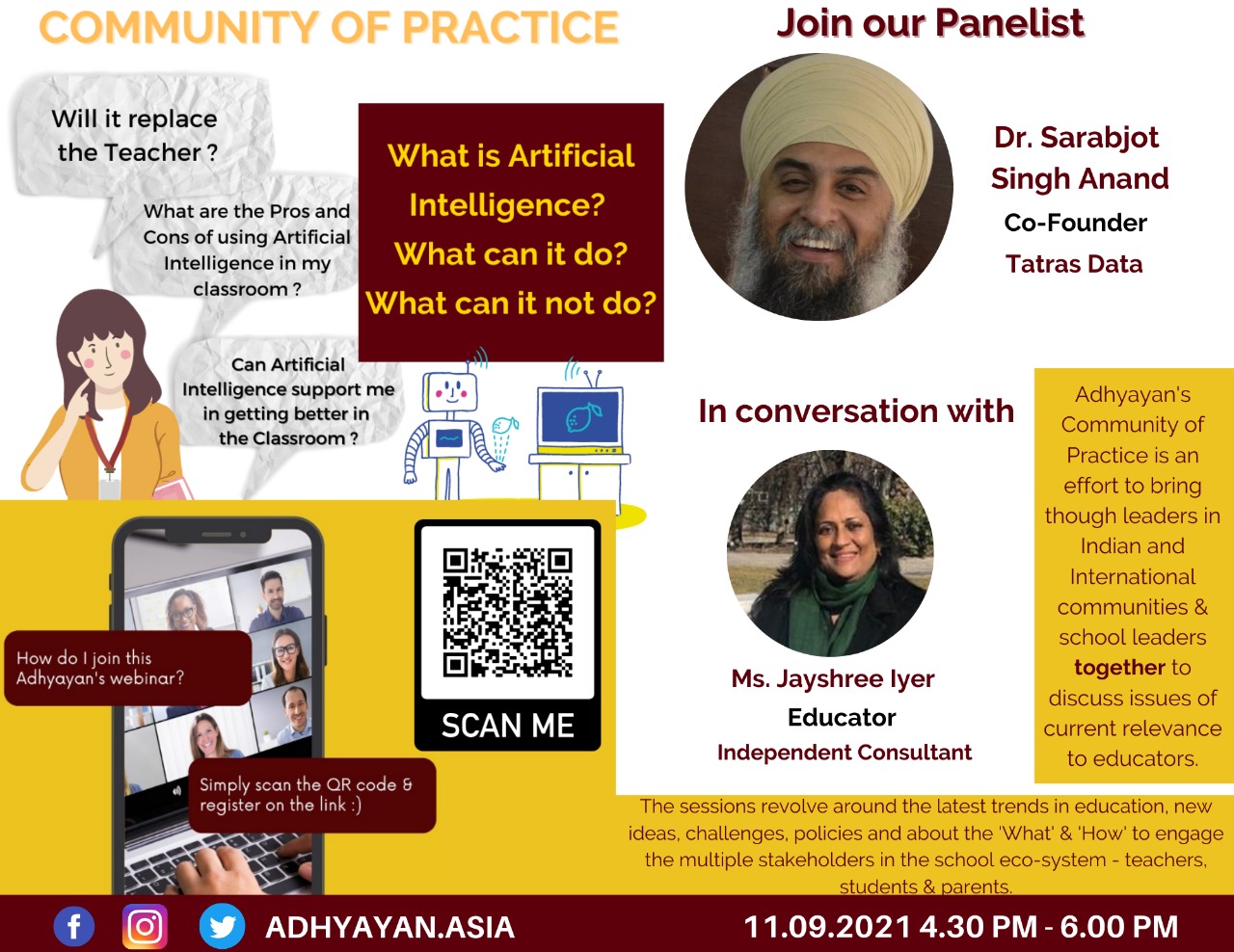 The Adhyayan’s Community of Practice organized a webinar on the 11th of September, 2021 on a rather interesting topic: Artificial Intelligence.
The Adhyayan’s Community of Practice organized a webinar on the 11th of September, 2021 on a rather interesting topic: Artificial Intelligence.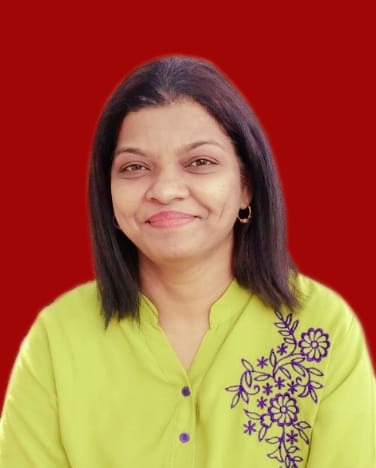 – Written by Mrs. Namrata Cheke, Teacher at Don Bosco High School, Matunga
– Written by Mrs. Namrata Cheke, Teacher at Don Bosco High School, Matunga